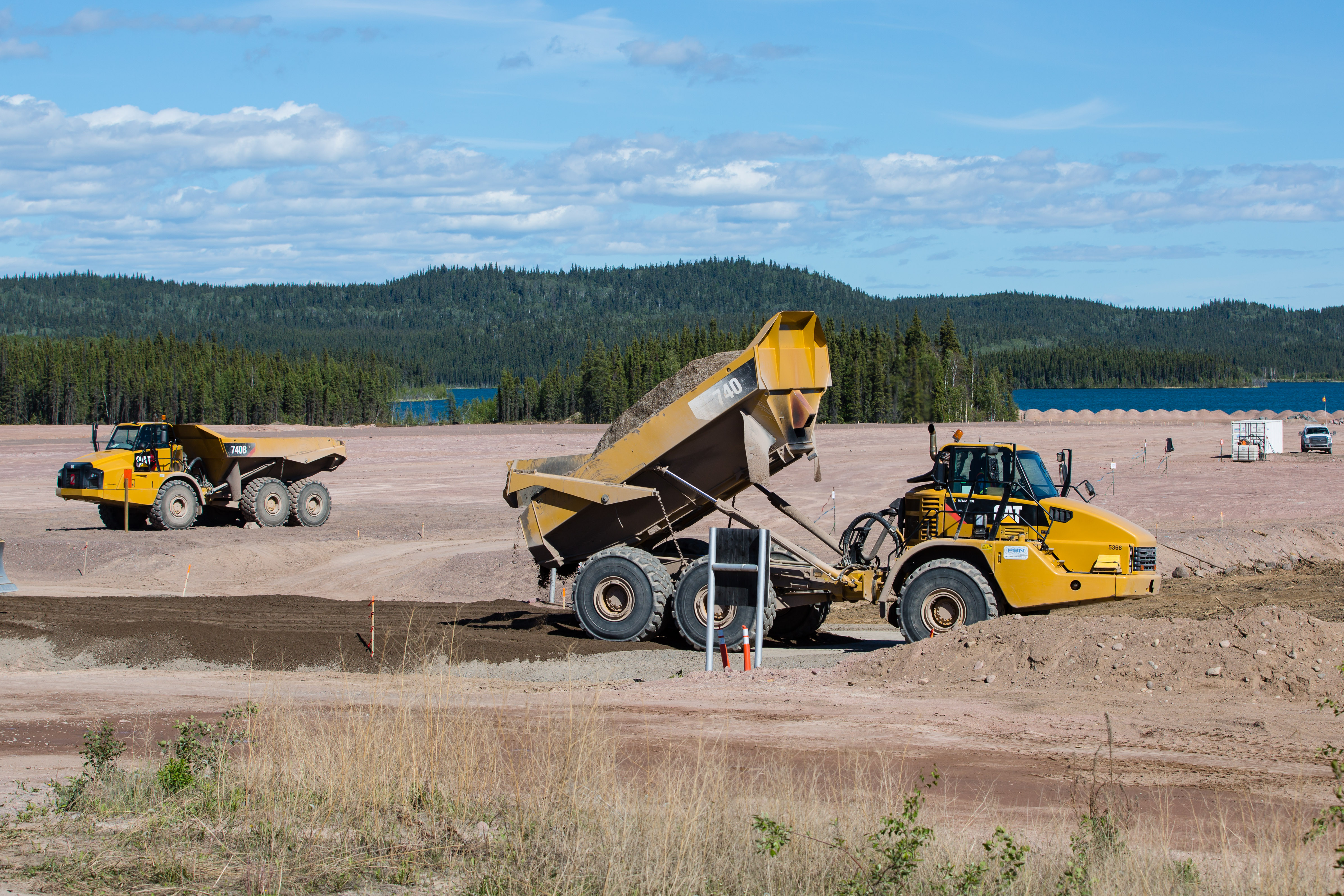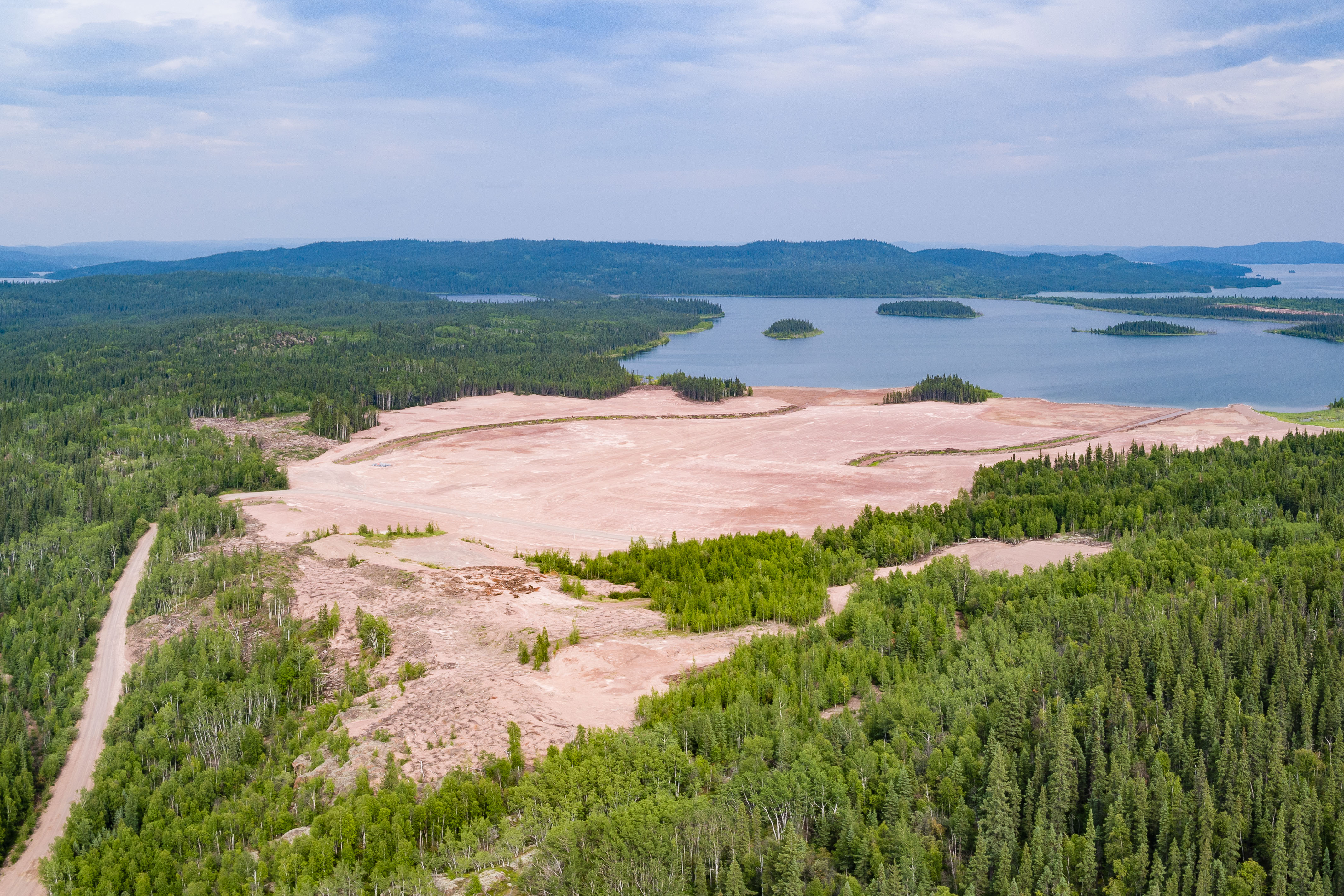This summer marks the end of a multi-year journey to remediate the former Lorado uranium mill site in northern Saskatchewan, as part of a larger project managed by SRC called Project CLEANS (Cleanup of Abandoned Northern Sites). I am struck by all that has been accomplished at Lorado and how many people were involved in completing this complex project.
Lorado was the site of a uranium mill that operated from 1957 to 1960, during the uranium mining boom in Canada. Although SRC began to manage the site on behalf of the Saskatchewan Ministry of the Economy in 2008, field studies, some decommissioning and site characterization had begun years before. In 2014, we had the remediation plan approved by the regulators and could finally begin the work. The site is close to the community of Uranium City and located in the traditional territories of First Nations. Many Métis people also call this region home. Lorado posed health and safety hazards and we’re glad that our efforts to reduce these hazards have made a difference in the environment, now and for future generations.
Challenges of working at a remote location
Remediating Lorado was not a simple fix. In the years following the mill closure, nature had begun to reclaim the land. The actual extent of impacts from the mill operations were difficult to determine, as they were distributed across a broad landscape.

Lorado is remote from the provincial road network and power grid, and is far from sources of materials, supplies and from waste handling facilities. An ice road is only open for the month of March and the barge service doesn’t start until July. The northern climate only allows for a short construction season, typically from June to mid-October, so we had to use our time and resources efficiently in order to make reasonable progress.
How Lorado was remediated
The objective of remediating the Lorado mill site was to reduce the risks posed to wildlife, aquatic life and people. Nero Lake had become acidic because of the mill process water and runoff from the tailings. Over the summer of 2014, four hundred tonnes of lime were added to the lake, bringing the water to a neutral pH. This reduced the downstream impacts to Beaverlodge Lake. Meanwhile, an engineered cover of sand and till was constructed over top of the tailings, greatly reducing their future impact on Nero Lake. The cover will be seeded this year with a variety of native plant species.

During and after the mill operation, industrial debris had been left in nearby dumps and scattered across the site. This debris was consolidated and buried with sand and till. Where available, non-contaminated trees and soil that had been removed were placed over the constructed covers. The more open or steep areas were seeded.

The Lorado site will be monitored over the upcoming years to check that the improvements are stable and ecosystems are recovering.
Together, we made a difference
The extensive list of people who contributed to the Lorado remediation project demonstrates the collaboration that was required to reach our goal. Elders shared their stories of working at the mill, as well as their insights into past and desired future site conditions. Along with the elders, community leaders provided their support of the project, while emphasizing that the land must be made safe for wildlife, aquatic life and people. Other residents offered their knowledge of the site and their advice on remediation methods. Over the years, numerous consultants contributed their specialized expertise and innovative approaches, based on experience at other sites, including:
- ecosystem monitoring
- risk assessment
- conceptual remediation planning
- engineering design
- environmental protection monitoring
- quality assurance
Several contractors provided their organizational skills and their “get it done” attitude to complete the work. They also helped solve the unforeseeable problems that typically arise in the remediation of legacy sites. And of course, the workers who were at the site are to be commended, as they spent long days and weeks in clouds of mosquitoes, hot sun and rain, while doing the hard physical work. Despite the challenges, there were friendly faces and positive attitudes when I visited with them at the site.

At SRC, my colleagues and team members lent their knowledge, ideas and dedication to help me meet the challenges of managing such a complex project. I hope everyone who contributed to the Lorado remediation realizes how important their roles were and how much I appreciate their significant efforts. We were able to reach this final stage because of the hard work of many. Looking to the future, SRC will be using lessons learned during the Lorado remediation to enhance the management of other sites in Project CLEANS. In particular, we feel SRC’s approach to emphasize sustainability in the procurement of a prime contractor at Lorado increased the regional benefit of the project. We see other innovative methods being utilized in Project CLEANS, such as the geospatial database to support decision making, and the use of the energy storing system developed at SRC, being applicable to other remediation projects and other industries.
